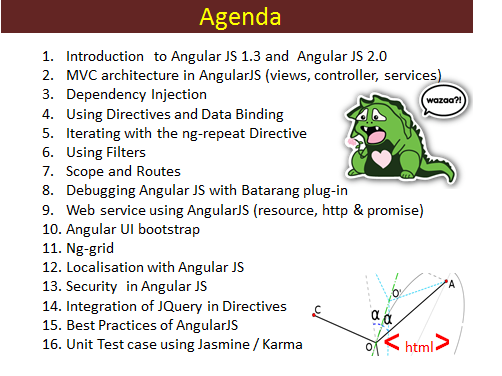
JNTU, Kukatpally, Hyderabad, India - 500085.
2
Details verified of Veera Venkata Satyanarayana Nalamati✕
 Identity
Identity
 Education
Education
Know how UrbanPro verifies Tutor details
Identity is verified based on matching the details uploaded by the Tutor with government databases.

Telugu
English
Hindi
![]() Madras University 2003
Madras University 2003
BE (ECE)
JNTU, Kukatpally, Hyderabad, India - 500085
![]() Phone Verified
Phone Verified
![]() Email Verified
Email Verified
![]() Facebook Verified
Facebook Verified
Report this Profile
Is this listing inaccurate or duplicate? Any other problem?
Please tell us about the problem and we will fix it.
Class Location
![]() Online Classes (Video Call via UrbanPro LIVE)
Online Classes (Video Call via UrbanPro LIVE)
![]() Student's Home
Student's Home
![]() Tutor's Home
Tutor's Home
Years of Experience in Java Training Classes
10
Teaches
Spring, Web services, JSP (Java Server Pages), Struts, J2EE, Core Java, Hibernate, Servlet
Certification training offered
Yes
Class Location
![]() Online Classes (Video Call via UrbanPro LIVE)
Online Classes (Video Call via UrbanPro LIVE)
![]() Student's Home
Student's Home
![]() Tutor's Home
Tutor's Home
Years of Experience in jQuery Training
7
Class Location
![]() Online Classes (Video Call via UrbanPro LIVE)
Online Classes (Video Call via UrbanPro LIVE)
![]() Student's Home
Student's Home
![]() Tutor's Home
Tutor's Home
Years of Experience in Spring Training
5
Class Location
![]() Online Classes (Video Call via UrbanPro LIVE)
Online Classes (Video Call via UrbanPro LIVE)
![]() Student's Home
Student's Home
![]() Tutor's Home
Tutor's Home
Years of Experience in Java Script Training classes
5
Class Location
![]() Online Classes (Video Call via UrbanPro LIVE)
Online Classes (Video Call via UrbanPro LIVE)
![]() Student's Home
Student's Home
![]() Tutor's Home
Tutor's Home
Years of Experience in Angular.JS Training
4
Teaching Experience in detail in Angular.JS Training
I have 5 years of online training experience and also supporting the jobs for the students in v various technologies like java,J2ee,Spring,Hibernate,HTMl 5,CSS3,Java Script,JQUERy,ANgular Js
Class Location
![]() Online Classes (Video Call via UrbanPro LIVE)
Online Classes (Video Call via UrbanPro LIVE)
![]() Student's Home
Student's Home
![]() Tutor's Home
Tutor's Home
Years of Experience in CSS Training
6
Class Location
![]() Online Classes (Video Call via UrbanPro LIVE)
Online Classes (Video Call via UrbanPro LIVE)
![]() Student's Home
Student's Home
![]() Tutor's Home
Tutor's Home
1. What type of Java programming do you teach?
Spring, Web services, JSP (Java Server Pages) and others
2. Which classes do you teach?
I teach Angular.JS, CSS, HTML, Java Script Training, Java Training, Spring and jQuery Classes.
3. Do you provide a demo class?
Yes, I provide a free demo class.
4. How many years of experience do you have?
I have been teaching for 10 years.
Answered on 08/05/2016 Learn IT Courses/Java
Answered on 16/12/2015 Learn HTML5 Training
Answered on 16/12/2015 Learn IT Courses/Java Script Training
Answered on 04/12/2015 Learn IT Courses/Java
Answered on 02/12/2015 Learn Java Certification Classes
Class Location
![]() Online Classes (Video Call via UrbanPro LIVE)
Online Classes (Video Call via UrbanPro LIVE)
![]() Student's Home
Student's Home
![]() Tutor's Home
Tutor's Home
Years of Experience in Java Training Classes
10
Teaches
Spring, Web services, JSP (Java Server Pages), Struts, J2EE, Core Java, Hibernate, Servlet
Certification training offered
Yes
Class Location
![]() Online Classes (Video Call via UrbanPro LIVE)
Online Classes (Video Call via UrbanPro LIVE)
![]() Student's Home
Student's Home
![]() Tutor's Home
Tutor's Home
Years of Experience in jQuery Training
7
Class Location
![]() Online Classes (Video Call via UrbanPro LIVE)
Online Classes (Video Call via UrbanPro LIVE)
![]() Student's Home
Student's Home
![]() Tutor's Home
Tutor's Home
Years of Experience in Spring Training
5
Class Location
![]() Online Classes (Video Call via UrbanPro LIVE)
Online Classes (Video Call via UrbanPro LIVE)
![]() Student's Home
Student's Home
![]() Tutor's Home
Tutor's Home
Years of Experience in Java Script Training classes
5
Class Location
![]() Online Classes (Video Call via UrbanPro LIVE)
Online Classes (Video Call via UrbanPro LIVE)
![]() Student's Home
Student's Home
![]() Tutor's Home
Tutor's Home
Years of Experience in Angular.JS Training
4
Teaching Experience in detail in Angular.JS Training
I have 5 years of online training experience and also supporting the jobs for the students in v various technologies like java,J2ee,Spring,Hibernate,HTMl 5,CSS3,Java Script,JQUERy,ANgular Js
Class Location
![]() Online Classes (Video Call via UrbanPro LIVE)
Online Classes (Video Call via UrbanPro LIVE)
![]() Student's Home
Student's Home
![]() Tutor's Home
Tutor's Home
Years of Experience in CSS Training
6
Class Location
![]() Online Classes (Video Call via UrbanPro LIVE)
Online Classes (Video Call via UrbanPro LIVE)
![]() Student's Home
Student's Home
![]() Tutor's Home
Tutor's Home
Answered on 08/05/2016 Learn IT Courses/Java
Answered on 16/12/2015 Learn HTML5 Training
Answered on 16/12/2015 Learn IT Courses/Java Script Training
Answered on 04/12/2015 Learn IT Courses/Java
Answered on 02/12/2015 Learn Java Certification Classes

Share this Profile
Reply to 's review
Enter your reply*
Your reply has been successfully submitted.
Certified
The Certified badge indicates that the Tutor has received good amount of positive feedback from Students.